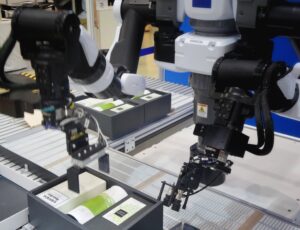Introduction
In recent years, the field of robotics has witnessed tremendous advancements, with humanoid robots emerging as a prominent area of research and development. These robots, designed to mimic human form and behavior, have garnered significant attention for their potential to revolutionize various industries, from healthcare to entertainment. This article delves into the evolution of humanoid robots, their applications, technological challenges, and the ethical considerations surrounding their deployment.
Tech@Levintutu is the technical team at @Levintutu who writes on the latest technology and its applications in industrial automation. To read more about us, visit our case studies at https://levintutu.com/case-study/.
I. The Evolution of Humanoid Robots
A. Historical Context
- Early Concepts and Automata
- Leonardo da Vinci’s Automata
- The Emergence of Modern Robotics in the 20th Century
B. Milestones in Humanoid Robotics
- WABOT-1: The Pioneer
- ASIMO: A Symbol of Advancement
- Sophia: The AI-Powered Social Robot
- Boston Dynamics’ Atlas: Pushing Boundaries
II. Key Technological Components of Humanoid Robots
A. Sensing and Perception
- Vision Systems: Cameras and Depth Sensors
- Auditory Sensors: Microphones and Sound Processing
- Tactile Sensors: Enhancing Interaction
B. Locomotion and Mobility
- Legged vs. Wheeled Robots
- Advances in Walking and Balancing Algorithms
- Humanoid Robot Exoskeletons
C. Artificial Intelligence and Cognitive Capabilities
- Machine Learning and Neural Networks
- Natural Language Processing for Human Interaction
- Cognitive Processing for Decision-Making
III. Applications of Humanoid Robots
A. Healthcare and Rehabilitation
- Assistive Robots for the Elderly and Disabled
- Surgical Robots: Precision and Safety
- Emotional Support and Therapy Robots
B. Education and Training
- Personalized Learning with Robotic Tutors
- Simulation and Training Environments
- Language Acquisition and Cultural Education
C. Entertainment and Hospitality
- Theme Parks and Attractions
- Interactive Museum Guides
- Service Robots in the Hospitality Industry
IV. Technological Challenges and Future Prospects
A. Power Efficiency and Autonomy
- Battery Technology and Energy Management
- Advancements in Energy-Harvesting Solutions
- Long-Term Autonomy and Self-Charging
B. Human-Robot Interaction and Ethics
- Ethical Dilemmas in Humanoid Robotics
- Ensuring User Safety and Trust
- Establishing Ethical Guidelines and Regulations
C. Integration of AI and Physical Systems
- Overcoming Hardware Limitations
- Achieving Seamless AI-Physical Interplay
- Synergizing AI and Robotic Control Systems
To read more about industrial automation, visit our blog on Harnessing the Power of Hyperscalers and Industrial Automation to Combat Food Wastage
Conclusion
Humanoid robots represent a significant leap in robotics, bringing us closer to the realm of science fiction. Their evolution, from early concepts to advanced models like Sophia and Atlas, showcases the rapid progress in this field. As we continue to overcome technological challenges, including power efficiency and ethical considerations, the potential applications of humanoid robots in healthcare, education, entertainment, and beyond are boundless. With ongoing research and innovation, the day when humanoid robots become an integral part of our daily lives may not be too far off.
This article provides an in-depth look at How Humanoid Robots is Revolutionizing Industrial Automation and the benefits it brings to various industries. Depending on your target audience, you might want to include specific case studies or examples of successful implementations in different sectors.
To stay updated with our latest innovations and explore how our AI-led automation can revolutionize your enterprise-wide processes, visit our website and follow us for exciting developments in the world of robotics and data analytics: https://levintutu.com/
And Follow us at https://www.linkedin.com/company/levintutu-automation/.



